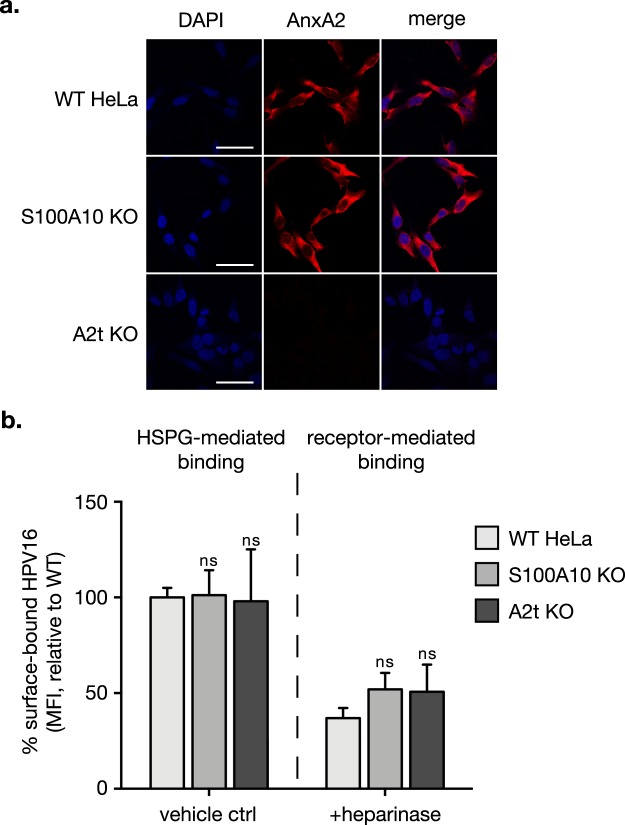Figure 3.
S100A10 and A2t are not required for cell surface binding of HPV16. HPV binding occurs through binding heparan sulfate proteoglycans (HSPG) and a receptor complex. (a) Wild type (WT) HeLa and S100A10 KO cells ubiquitously express AnxA2 at the cell surface. Here, cells were grown in chamber slides, fixed with 2% PFA and immunostained for AnxA2 under non-permeabilized conditions (no Triton-X). Nuclei were stained with DAPI (blue). A single confocal slice is shown in each representative image. Scale bar = 50 μm. (b) WT, S100A10 KO, and A2t KO HeLa cells were grown to 80% confluence, washed with heparinase buffer, and incubated with either buffer (vehicle ctrl; left panel) or 2 U/mL heparinase I (removes HSPG; right panel) for 1 h at 37 °C. Cells were transferred to ice, washed with ice-cold PBS, and then saturated with HPV16 pseudovirions (10μg/1E6 cells) in serum-free conditions for 1 h at 4 °C. Cells were collected via scraping on ice, and the amount of surface-bound HPV was analyzed by flow cytometry. Results show the mean fluorescent intensity (MFI) ± s.d., relative to WT HeLa, for three independent replicates (n = 9). Statistics: 2-way ANOVA with Sidak’s multiple comparisons test. ns = not significant.

